
As part of our Waterfront Symposium on September 29th, attendees had the opportunity to join one of the four tours that showcase innovation, recreation, and revitalization along Toronto’s waterfront. Chris Glaisek is the Chief Planning and Design Officer at Waterfront Toronto led the Toronto Harbour Boat Tour.
This week, I had the pleasure of leading Waterfront Symposium participants on a tour of Toronto’s waterfront, a place that is now ready to launch thanks to consistent vision and tri-government investment. From new housing and destinations to innovative and iconic architecture, public spaces and art, waterfront revitalization is reorienting Toronto to the water.
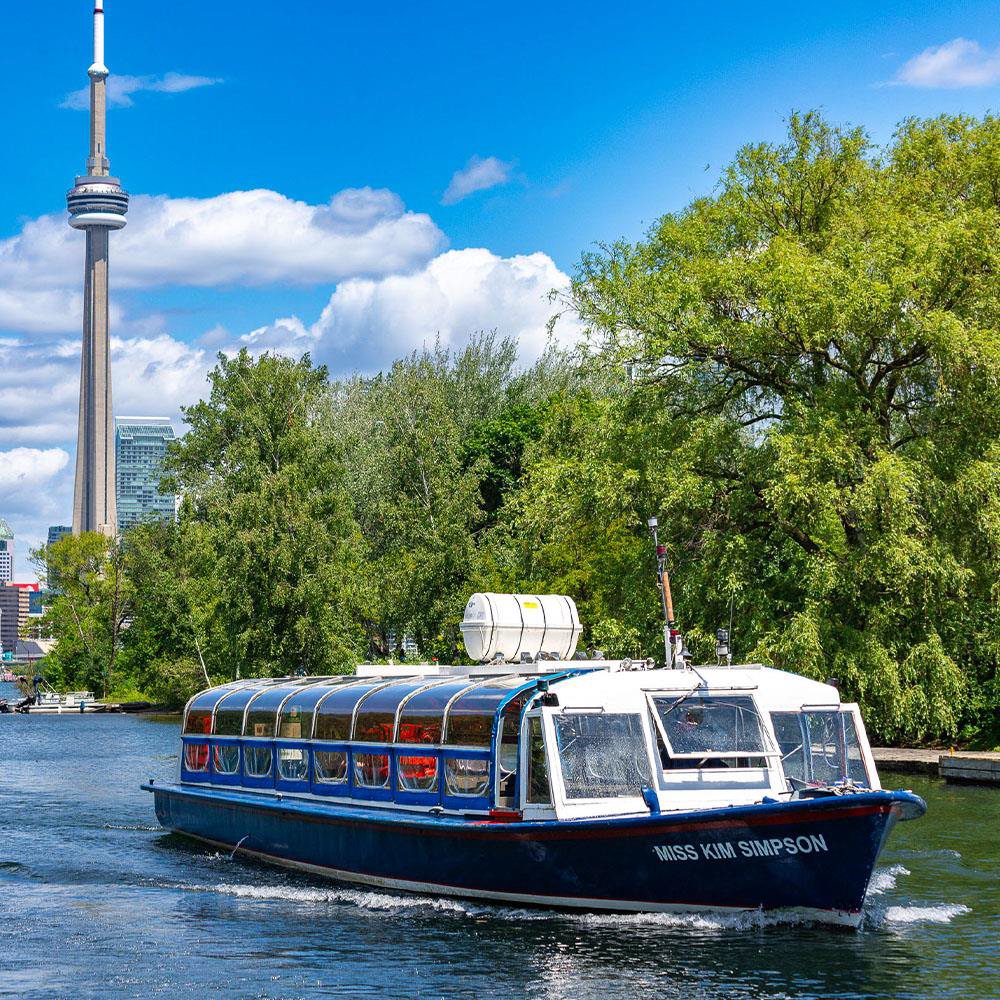
Here’s a quick recap of the key stops along the way:
CENTRAL WATERFRONT
We started the journey at Pier 6. Originally built in 1907 and relocated several times, the building is one of several successful adaptive reuses on the waterfront.
Our first glance back at Toronto from the water, the Jack Layton Ferry Terminal was busy as usual, connecting over a million people annually to the Toronto Islands.
We moved past Queen’s Quay Terminal, once a cold storage facility, now home to shops, offices, and residences. The property is listed in the Toronto Historical Board's Inventory of Heritage Properties.
Continuing along was HTO Park, a park that transitions city to lake with grassy dunes and its now-iconic yellow umbrellas. Just steps away is the Waterfront Fire Hall, an architectural nod to the harbour, complete with fireboat docks.
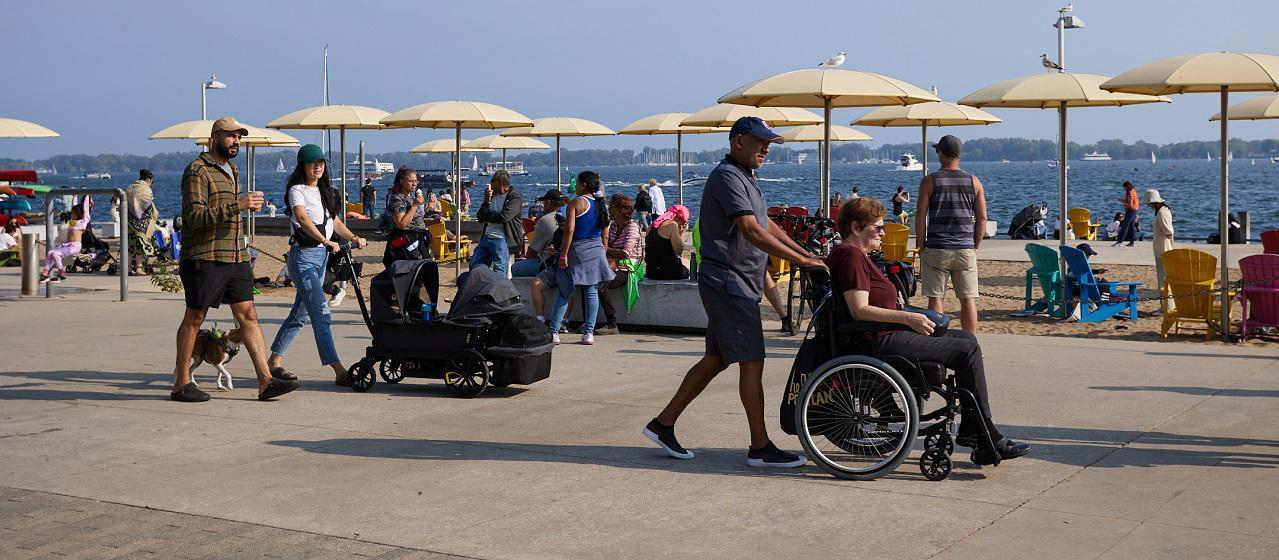
Close to HTO Park were the WaveDecks—undulating wooden platforms that mimic Lake Ontario’s shoreline. These decks blend art, design, and ecology, creating both public space and aquatic habitats.
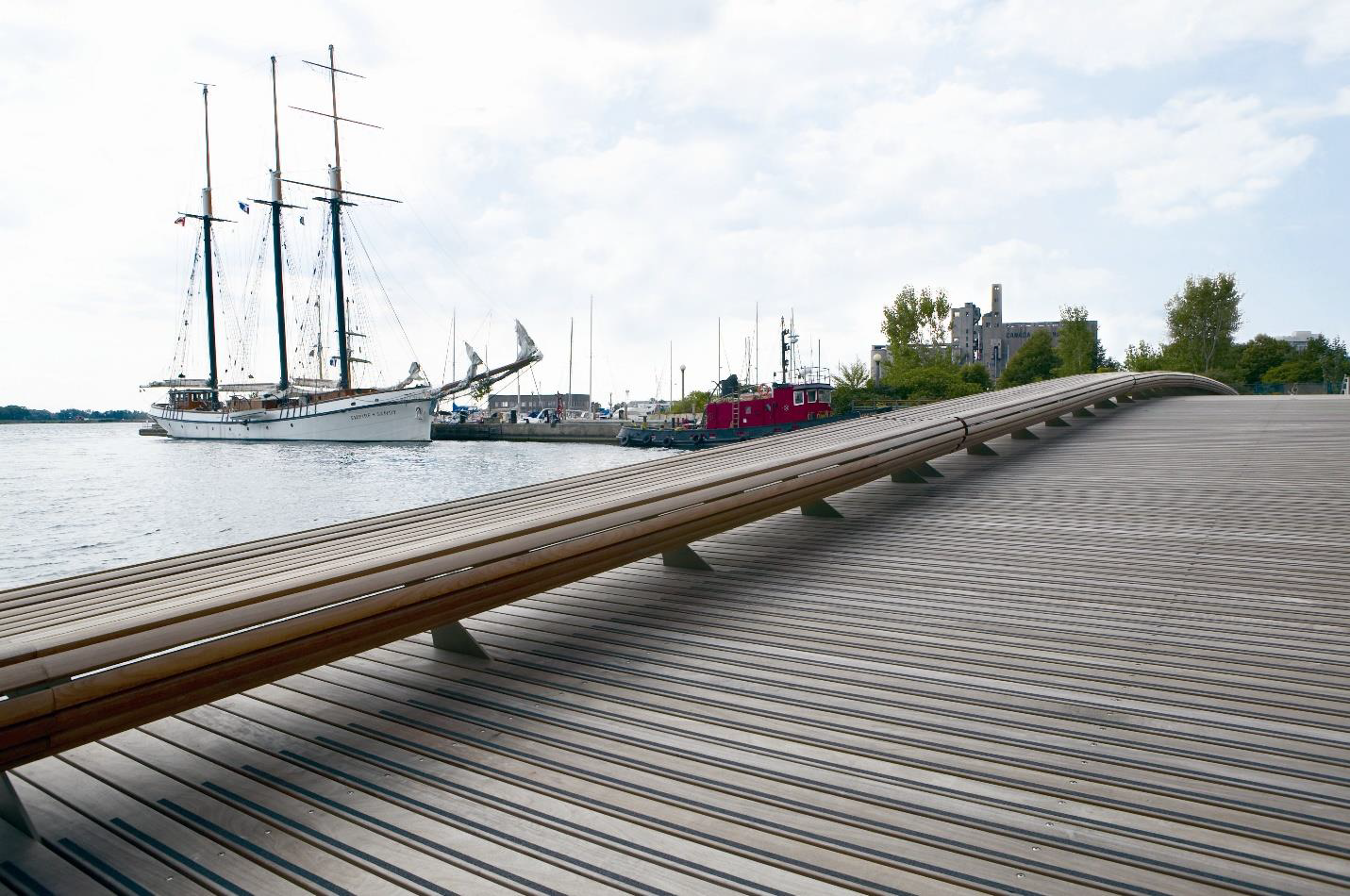
PORT LANDS
We moved towards the Port Lands to get a view of one of North America’s most ambitious civil works project: Port Lands Flood Protection. Over 1.3 million cubic metres of soil were excavated to create a new river mouth here. This feat of landscape design and engineering created an entirely new island—Ookwemin Minising – meaning “place of the black cherry trees.”
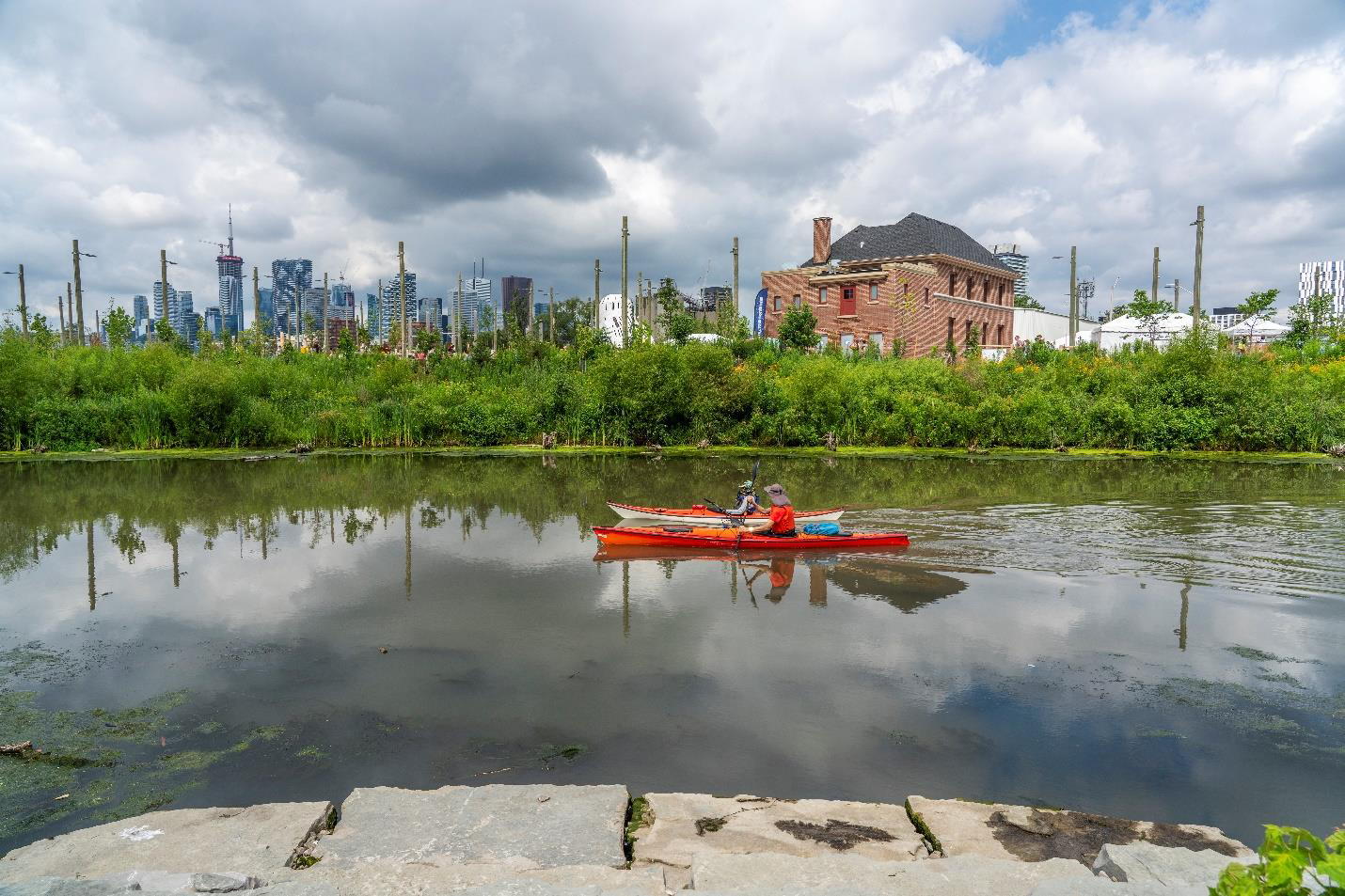
This future community that can now develop thanks to flood protection and soil remediation will mean new homes and job opportunities.
This summer, the first public space on the island opened: Biidaasige Park. Featuring thousands of new trees, more access to the water and a playground for all ages, the park is already a landmark destination. Next summer, another 10 acres of park will open along with the Lassonde Art Trail, made possible through private investment in the waterfront. The upcoming Lassonde Art Trail on Ookwemin Minising will add a cultural layer to the landscape which will be a free, open-air route with a rotating cycle of contemporary installations from local, national and international artists.
Connecting the island to the mainland are four iconic new bridges, shipped from Nova Scotia and painted in bold hues to define the space.
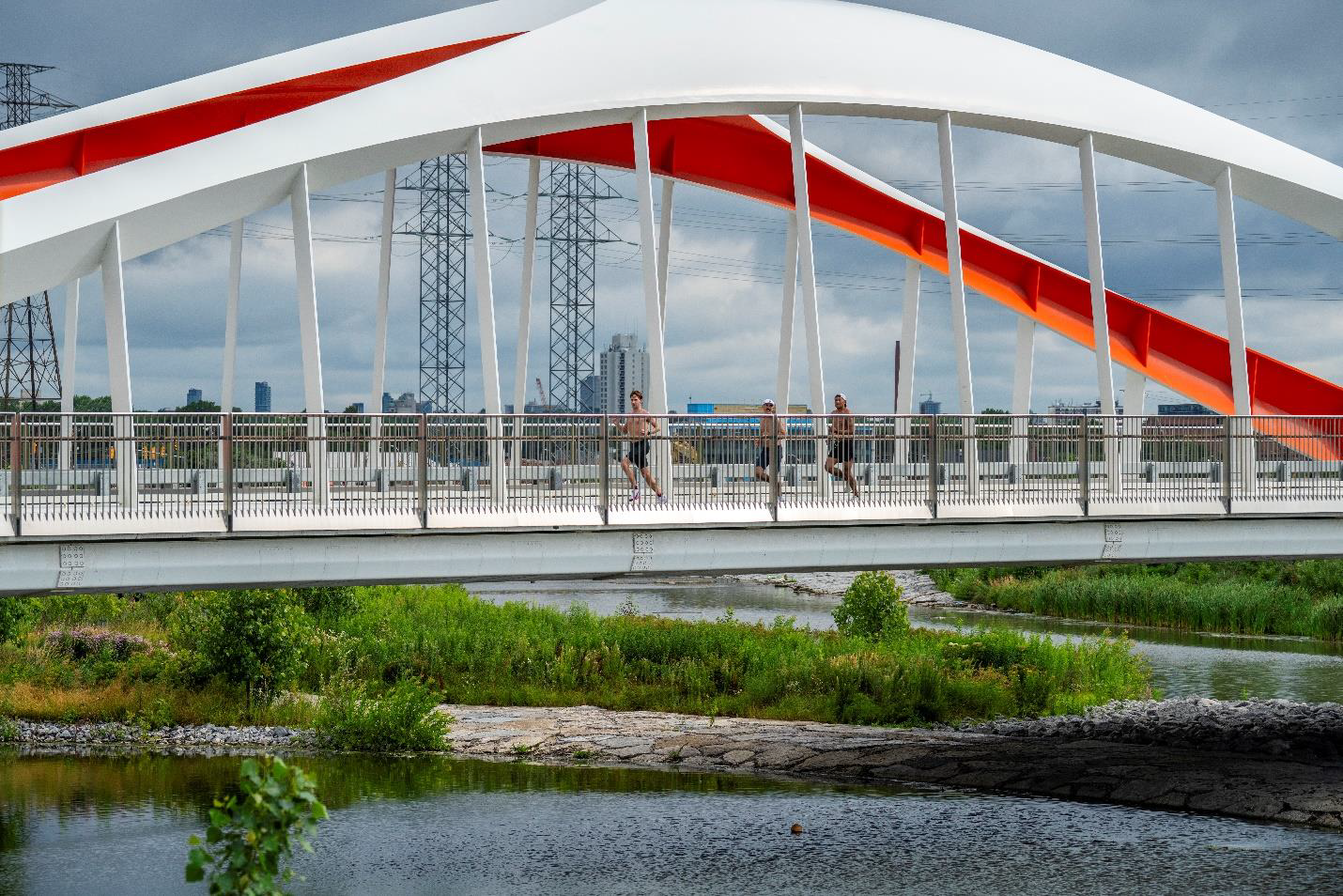
EAST BAYFRONT
Our next stop was East Bayfront, home to some of Toronto’s most photogenic parks. Sugar Beach stood out with its pink umbrellas and whimsical rock features, while the Water’s Edge Promenade gave us a serene, tree-lined view of the lake.
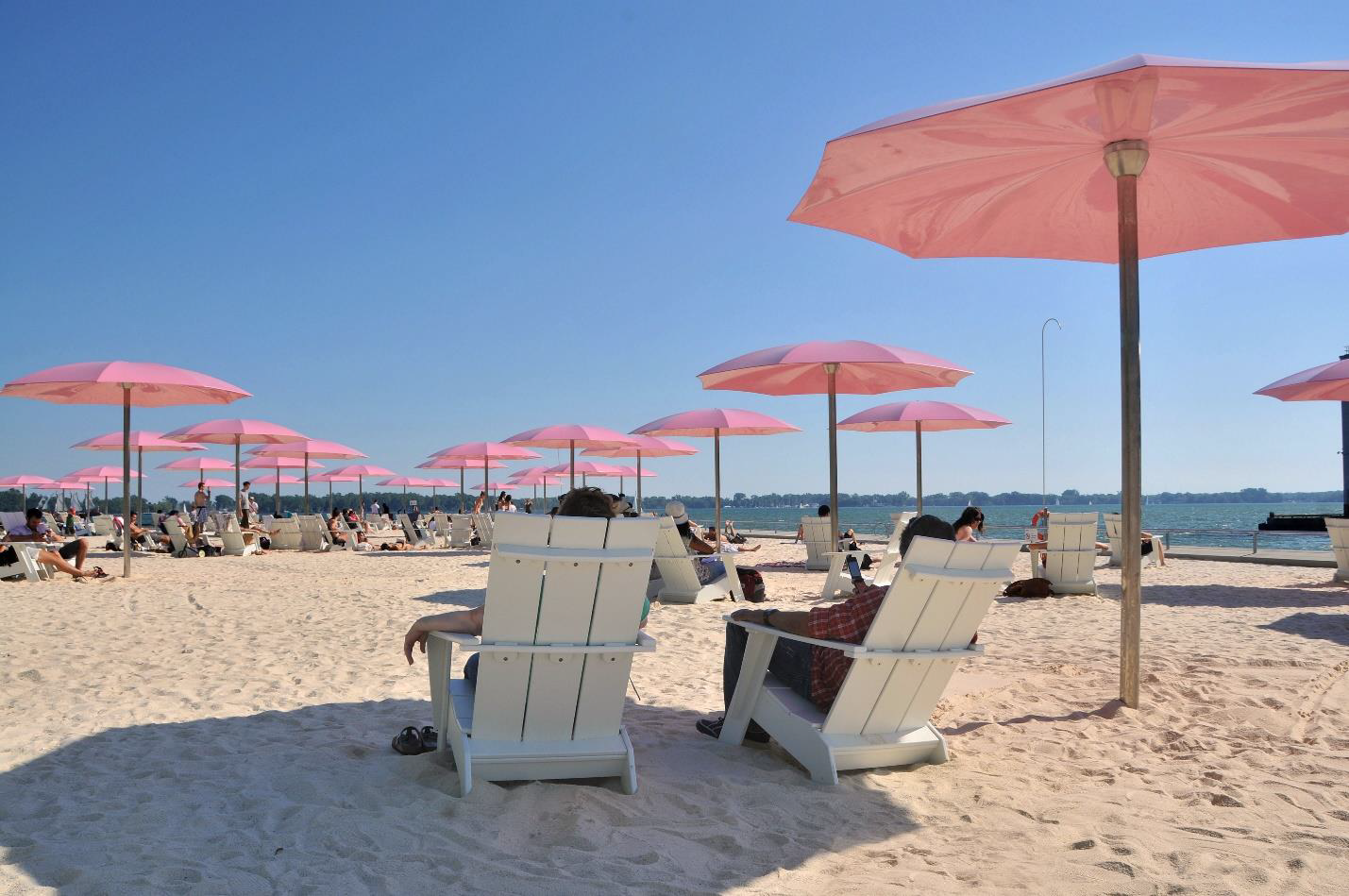
We saw the new Limberlost Place, George Brown College’s 10-storey mass timber academic building, adding to the mix of places to live, work, play – and learn. . Next to George Brown is Sherbourne Common. We explored the intersection of design and infrastructure here: this park features a UV stormwater treatment system integrated into
its public art—a perfect blend of form and function.
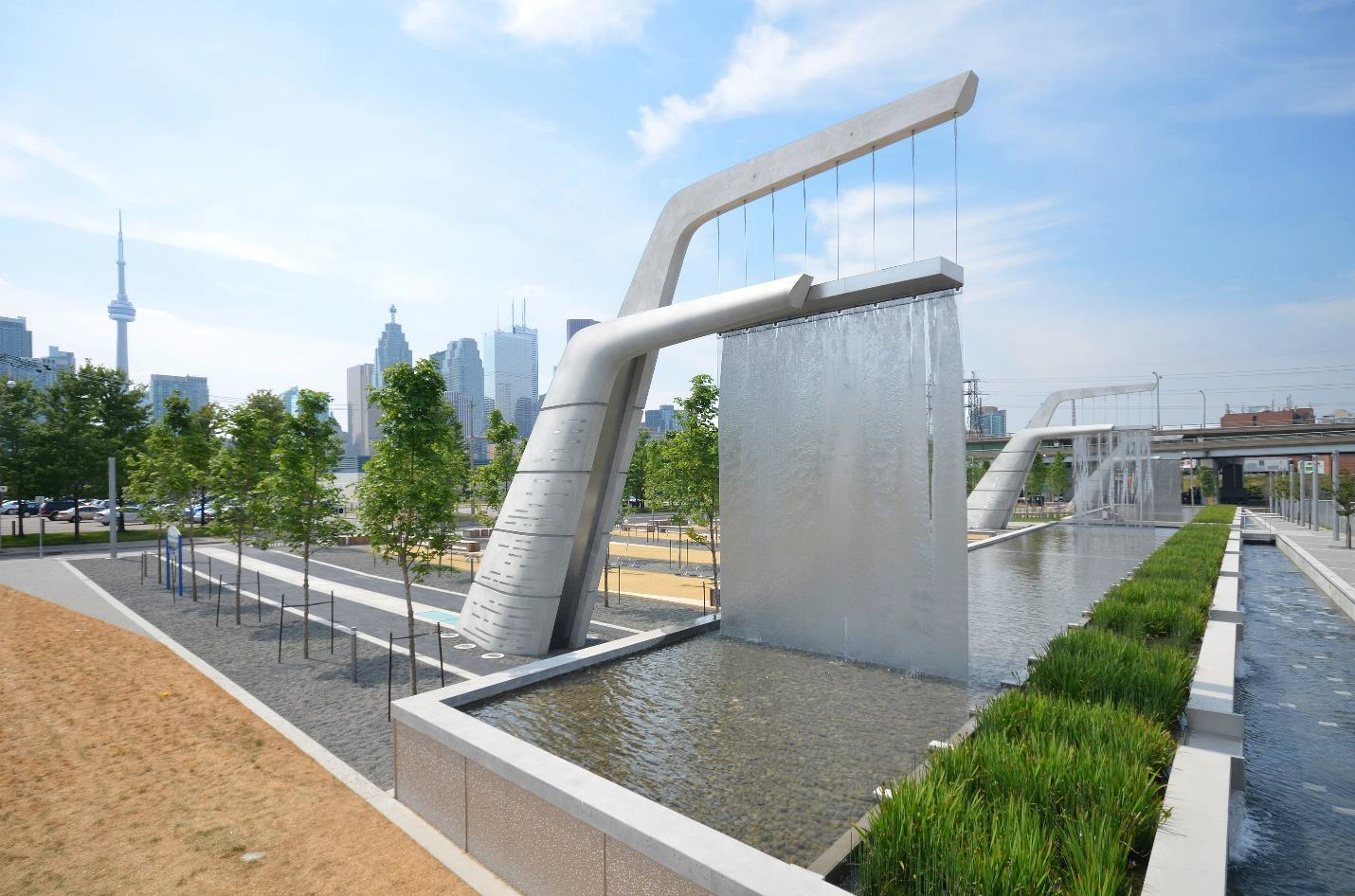
We also glimpsed parts of T3 Bayside, North America’s largest timber office building and now home to Waterfront Toronto.
Finally, we learned about Quayside, one of the most significant housing projects in Toronto. This future-forward, 12-acre development is focused on affordability, accessibility, and sustainability.
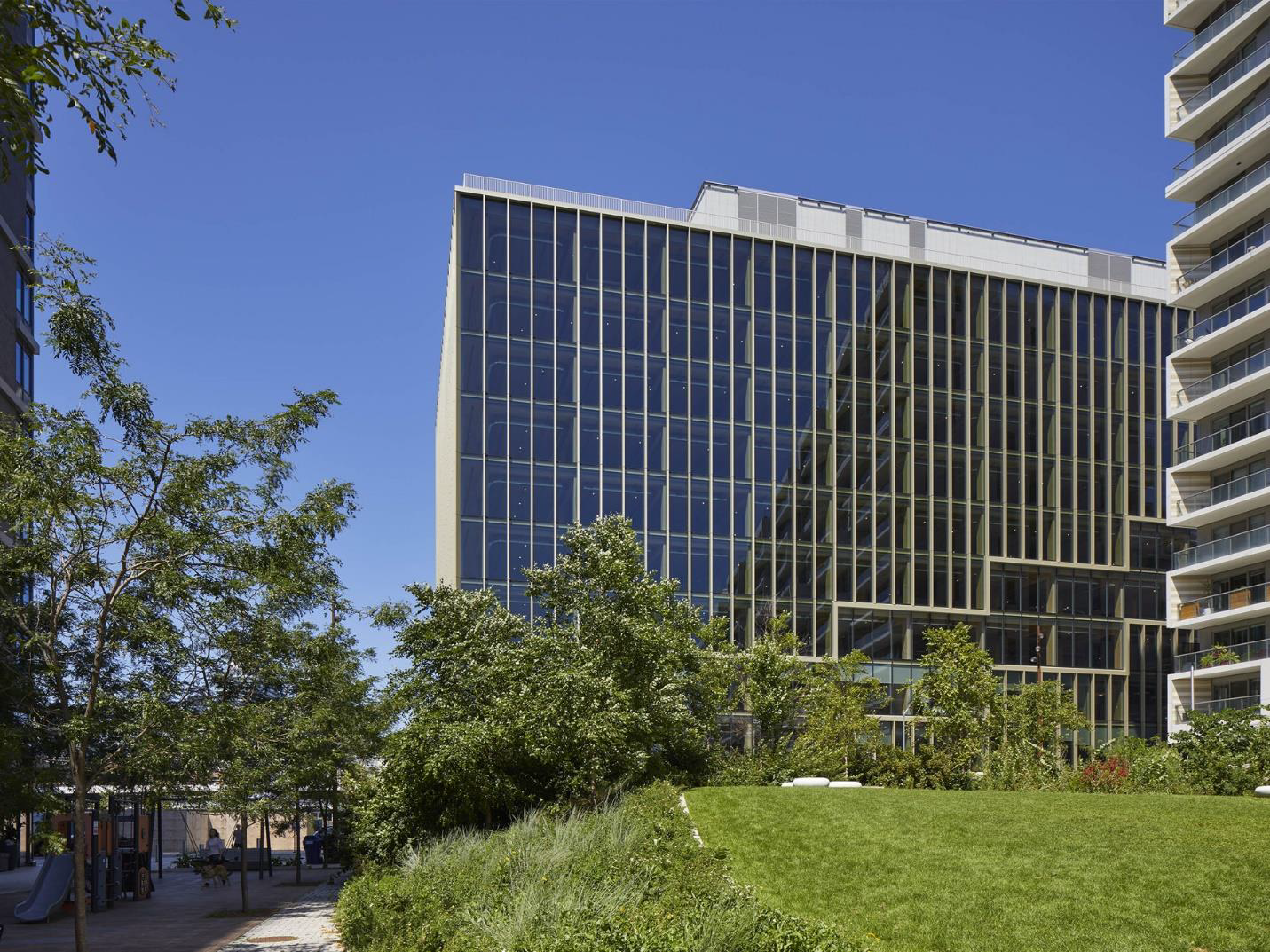
We concluded our tour at York Slip after exploring key highlights of Toronto’s evolving waterfront. Thank you to everyone who joined us and took the opportunity to see the city’s shoreline from a new perspective.



